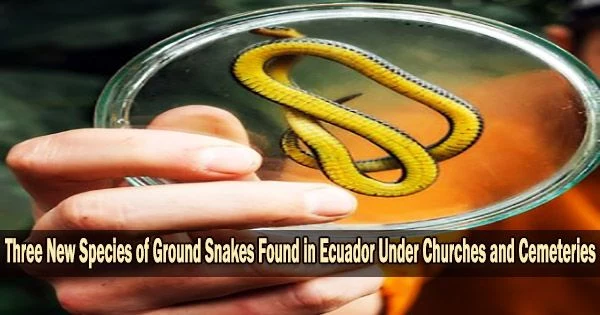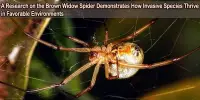Scientists working under the direction of Alejandro Arteaga, a grantee of The Explorers Club Discovery Expeditions and researcher at the Khamai Foundation, found three new cryptozoic (underground-dwelling) snakes in isolated Ecuadorian Andean towns’ cemeteries and churches. The discovery was made official in a study published in the journal ZooKeys.
The small, cylinder-shaped, and sometimes quaint-looking new snakes were given names in recognition of organizations or individuals who promote the study and preservation of tropical cloud forests that are inaccessible.
Believe or not, graveyards are also land of the living. A fossorial subspecies of snakes from the genus Atractus lives in the Ecuadorian Andes. Although this genus of ground snakes has the greatest diversity of species (150 species are currently recognized worldwide), few people have ever seen or even heard of one. This is presumably due to the fact that these snakes are shy, uncommon, and spend the majority of their existence hidden.
The majority of them also reside in distant cloud forests and are buried underground or in deep crevasses. But in this instance, crypts were where the new ground snakes were discovered.
The three new species were unintentionally discovered in locations where one would not have expected to find them. The two other new species were discovered next to an old church and in a small school, while the Discovery Ground Snake (Atractus discovery) was discovered underground in a small graveyard in a remote cloud forest town in southeastern Ecuador. All of this seems to imply that new snake species may be hiding around the corner, at least in the Andes.
The discovery of these new snakes is only the first step towards a much larger conservation project. Now, thanks to the encouragement of ZGAP, we have already started the process of establishing a nature reserve to protect the ground snakes. This action would not have been possible without first unveiling the existence of these unique and cryptic reptiles, even if it meant momentarily disturbing the peace of the dead in the graveyard where the lived.
Alejandro Arteaga
It is unfortunate because ground snakes often suffer when villagers live in the same town as them. According to the Arteaga study, the vast bulk of the new snakes’ natural habitat has already been destroyed. As a result of the retreating forest line, the ground snakes find themselves in the need to take refuge in spaces used by humans (both dead and alive), where they are usually killed on sight.
Diego Piñán, a teacher of the town where one of the new reptiles was found, says: “when I first arrived at El Chaco in 2013, I used to see many dead snakes on the road; others where hit by machetes or with stones. Now, after years of talking about the importance of snakes, both kids and their parents, while still wary of snakes, now appreciate them and protect them.”
Fortunately, Diego never threw away the dead snakes he found: he preserved them in alcohol-filled jars and these were later used by Arteaga to describe the species as new to science.
The procedure of naming species is significant to raise awareness about the existence of a new animal and its risk of extinction in addition to teaching about the significance of snakes. Two of the new snakes in this case are thought to be at serious risk of going extinct in the foreseeable future.
The process of discovery offers a chance to acknowledge and celebrate the efforts of the people and organizations battling to safeguard wildlife.
Atractus discovery was named to honor The Explorers Club Discovery Expedition Grants initiative, a program seeking to foster scientific understanding for the betterment of humanity and all life on Earth and beyond.
The grant program helps scientists and adventurers from all over the world in their efforts to slow climate change, save endangered species and cultural traditions, and protect the planet and its inhabitants.
Atractus zgap was named in honor of the Zoological Society for the Conservation of Species and Populations (ZGAP), a program seeking to conserve unknown but highly endangered species and their natural habitats throughout the world. Young scientists who are keen to establish and carry out conservation projects in their own nations are supported by the ZGAP funding program in their fieldwork.
Atractus michaelsabini was named in honor of a young nature lover, Michael Sabin, grandson of American philanthropist and conservationist Andrew “Andy” Sabin. The Sabin family has financed field research on endangered reptiles through the conservation group Re:wild and has helped to safeguard thousands of acres of vital habitat all over the world.
“Naming species is at the core of biology,” says Dr. Juan M. Guayasamin, co-author of the study and a professor at Universidad San Francisco de Quito. “Not a single study is really complete if it is not attached to the name of the species, and most species that share the planet with us are not described.”
“The discovery of these new snakes is only the first step towards a much larger conservation project,” says Arteaga. “Now, thanks to the encouragement of ZGAP, we have already started the process of establishing a nature reserve to protect the ground snakes. This action would not have been possible without first unveiling the existence of these unique and cryptic reptiles, even if it meant momentarily disturbing the peace of the dead in the graveyard where the lived.”
















